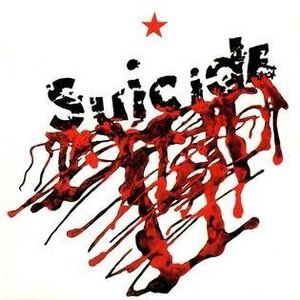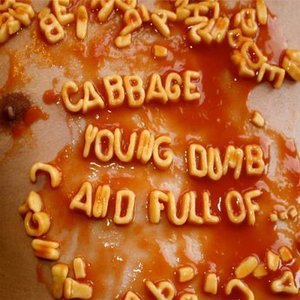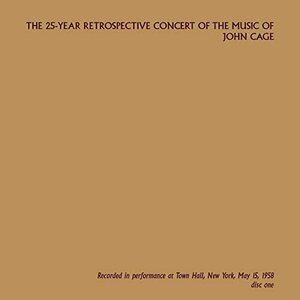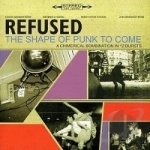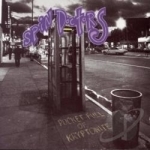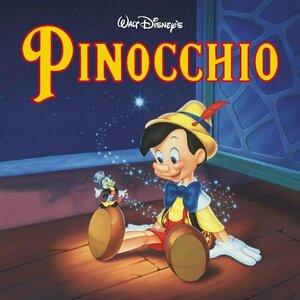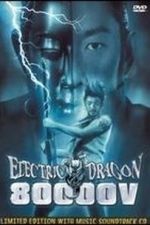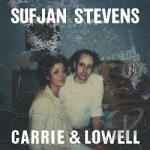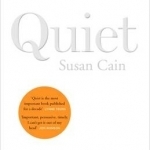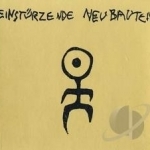Search
Search results
Rolling Stone's 441st greatest album of all time (498th in the 2020 list)
The punk-rock ethic but without the music. The album of noise starts quite well, but in the end is just a monotonous noise with someone muttering and then screeching over the top. I'm all for noisy experimental music but this was just generally unlistenable noise (I realise I sound like an old man saying that),
Imogen SB (4507 KP) rated Young, Dumb & Full OF... by Cabbage in Music
Jun 25, 2019
New filth
I really think that Cabbage have a unique and enjoyable sound. They remind me of a slightly looser Slaves. Their merge of noise rock and punk really makes for a great band. I would say they were great live but the two front runners had a fistfight half way through - MADLADS
Lee Ronaldo recommended The 25-Year Retrospective Concert of the Music of John Cage by John Cage in Music (curated)
Duff McKagan recommended A Shape of Punk to Come by Refused in Music (curated)
Ian Anderson recommended Pocket Full of Kryptonite by Spin Doctors in Music (curated)
Jonathan Donahue recommended track When You Wish Upon a Star by Cliff Edwards in When You Wish Upon a Star by Cliff Edwards in Music (curated)
Chris Sawin (602 KP) rated Electric Dragon 80.000 V (2000) in Movies
Jun 18, 2019
Dragon Eye Morrison (Tadanobu Asano, Hogun in the Thor films)) didn’t have a normal childhood. As a young boy, he climbed an electrical tower despite his friends warning him he’d be electrocuted. After the inevitable occurred, Dragon Eye seems to go through electroshock therapy whenever he gets into trouble. These shocking developments usually happen in fights and become more frequent when he gets older. As a result, he’s now charged with 80,000 volts of electricity at all times. He has developed his own version of the therapy that involves bolting himself to a table. The only way he can deal with being charged with this much electricity is by playing his electric guitar. Aside from his unusual self-treatment, Dragon Eye is a lizard expert who has an impressive reptile collection. When one of his lizards goes missing and Thunderbolt Buddha (Mastoshi Nagase, Paterson, The Hidden Blade) steps into the picture, that’s when things get even more bizarre.
Electric Dragon 80,000 V is a beyond weird cinematic experience. It clocks in at a little under 55-minutes, so calling it a full-length movie may be a bit of an overstatement. Written and directed by Gakuryū Ishii (credited as Sogo Ishi, he has also directed Labyrinth of Dreams and Angel Dust), the Japanese film is visually similar to Tetsuo, the Iron Man but is more like an extended music video that collided with the visuals of a live-action anime or manga. Ishii used the leftover funds from Gojoe: Spirit War Chronicle to make Electric Dragon 80,000 V while recruiting Asano and Nagase who were the two main leads in Gojoe.
Having nothing else in common with Gojoe, Electric Dragon 80,000 V is absolutely its own beast. The film’s biggest strength is its cinematography. With Norimichi Kasamatsu (Korean filmmaker Lee Song-il’s 2013 remake of Unforgiven) as the film’s cinematographer, being entirely in black and white allows the visuals of the film to bleed off the screen. Some of the most unique shots are when Dragon Eye is playing guitar as the drastic lighting and creative perspective are just what you’d expect from someone taking all of their frustrations out on a guitar; incredibly angry and in your face. There’s a scene in the second half of the film where Thunderbolt Buddha has gotten Dragon Eye’s full attention and Dragon Eye is moving through rooms without moving himself. He appears to be floating from room to room and it allows you to realize how he’s feeling at that particular point in the film as if it’s all a bad dream.
The music may be what makes or breaks the film for the viewer as it tends to walk a thin line between catchy rock music to nothing but loud, distorted noise with screaming. The film is noisy in every sense of the word. Whenever Dragon Eye starts playing his guitar, it often just sounds like noise. It fits the tone of the film perfectly since it complements the concept of channeling 80,000 volts of electricity through a guitar. That would probably sound more like amplified noise than polished music. If you’re not a fan of loud, heavy music then it may affect your judgment of the film.
Electric Dragon 80,000 V is an unusual gray scale experiment, but it’s certainly innovative and unlike anything else you’ve ever seen. It’s not a remake and it’s not an adaptation. It’s an original film that stands on its own, but its radical plunge into such severe weirdness could be a turnoff for some viewers as its manga inspired influences flow excessively through every frame surrounding every sequence with boisterous and heavy guitar riffs; think like a shorter and black and white version of Scott Pilgrim vs. the World that somehow fused with the FLCL anime. This was discovered while digging through Tadanobu Asano’s filmography and if you’re fan of his stuff, then Electric Dragon 80,000 V comes highly recommended.
Electric Dragon 80,000 V isn’t available to stream anywhere, was never released on Blu-ray (this would be amazing in high definition), and the DVD is out of print. A high quality version of the DVD cover had to be pulled from eBay of all places since Google can’t seem to find one otherwise that isn’t tiny in size. The DVD is available on Amazon from third party sellers for $39.99 plus $3.99 shipping in new condition and $29.98 with free shipping in used condition. A pre-owned DVD is running $69.99 to $79.99 on eBay with free shipping. It does look like someone uploaded a 90-minute version of the film on YouTube with English subs and that looks to be the best way to see the film at the moment.
Electric Dragon 80,000 V is a beyond weird cinematic experience. It clocks in at a little under 55-minutes, so calling it a full-length movie may be a bit of an overstatement. Written and directed by Gakuryū Ishii (credited as Sogo Ishi, he has also directed Labyrinth of Dreams and Angel Dust), the Japanese film is visually similar to Tetsuo, the Iron Man but is more like an extended music video that collided with the visuals of a live-action anime or manga. Ishii used the leftover funds from Gojoe: Spirit War Chronicle to make Electric Dragon 80,000 V while recruiting Asano and Nagase who were the two main leads in Gojoe.
Having nothing else in common with Gojoe, Electric Dragon 80,000 V is absolutely its own beast. The film’s biggest strength is its cinematography. With Norimichi Kasamatsu (Korean filmmaker Lee Song-il’s 2013 remake of Unforgiven) as the film’s cinematographer, being entirely in black and white allows the visuals of the film to bleed off the screen. Some of the most unique shots are when Dragon Eye is playing guitar as the drastic lighting and creative perspective are just what you’d expect from someone taking all of their frustrations out on a guitar; incredibly angry and in your face. There’s a scene in the second half of the film where Thunderbolt Buddha has gotten Dragon Eye’s full attention and Dragon Eye is moving through rooms without moving himself. He appears to be floating from room to room and it allows you to realize how he’s feeling at that particular point in the film as if it’s all a bad dream.
The music may be what makes or breaks the film for the viewer as it tends to walk a thin line between catchy rock music to nothing but loud, distorted noise with screaming. The film is noisy in every sense of the word. Whenever Dragon Eye starts playing his guitar, it often just sounds like noise. It fits the tone of the film perfectly since it complements the concept of channeling 80,000 volts of electricity through a guitar. That would probably sound more like amplified noise than polished music. If you’re not a fan of loud, heavy music then it may affect your judgment of the film.
Electric Dragon 80,000 V is an unusual gray scale experiment, but it’s certainly innovative and unlike anything else you’ve ever seen. It’s not a remake and it’s not an adaptation. It’s an original film that stands on its own, but its radical plunge into such severe weirdness could be a turnoff for some viewers as its manga inspired influences flow excessively through every frame surrounding every sequence with boisterous and heavy guitar riffs; think like a shorter and black and white version of Scott Pilgrim vs. the World that somehow fused with the FLCL anime. This was discovered while digging through Tadanobu Asano’s filmography and if you’re fan of his stuff, then Electric Dragon 80,000 V comes highly recommended.
Electric Dragon 80,000 V isn’t available to stream anywhere, was never released on Blu-ray (this would be amazing in high definition), and the DVD is out of print. A high quality version of the DVD cover had to be pulled from eBay of all places since Google can’t seem to find one otherwise that isn’t tiny in size. The DVD is available on Amazon from third party sellers for $39.99 plus $3.99 shipping in new condition and $29.98 with free shipping in used condition. A pre-owned DVD is running $69.99 to $79.99 on eBay with free shipping. It does look like someone uploaded a 90-minute version of the film on YouTube with English subs and that looks to be the best way to see the film at the moment.
Tim Booth recommended Carrie and Lowell by Sufjan Stevens in Music (curated)
David McK (3162 KP) rated Quiet: The Power of Introverts in a World That Can't Stop Talking in Books
Aug 15, 2020
2019.
One of the worst years of my professional working life.
In the early part of the year, I ended up getting dragged to the Doctor by my significant other, with the Doc then putting me off work with stress for just over a month. I returned, and then, roughly 6 months later, ended up putting myself off on unpaid leave for a year (which is ending soon, but that’s another matter).
Looking back on it, I believe a MASSIVE contributor to me feeling the way I did was the change in the office environment, and in my role: a move from being a key member of a small technical team (with its own side office) to being put in charge of a customer focused role I felt ill suited to, and slap-bang in the middle of a massive open plan office no less (which had the effect of leaving me completely and utterly drained each and every day, having to be always ‘on’).
Which is a long winded way of saying that I am, as I’ve always expected, a massive Introvert. (That could also probably be borne out by the fact that it’s now been more than 10 months since I last physically saw most of my friends due to Covid-19, and that I can count on the fingers of one hand the amount of times I’ve spoken to them in the same period (we more often text). Which I’m perfectly happy with.)
I’ve always felt exhausted by daily interactions, always felt happier in my own head than in the midst of a crowd. A music festival, or rock concert? My idea of hell. However, I’ve also always felt guilty for feeling the same, with society (seemingly) geared towards the go-getters, the ‘look at me!’ life and soul of the party (which I always leave early), to those who make the most noise. In short, to the Extroverts.
While it’s true that this book is American centric (I’m glad to say, in the UK at least, the large gatherings/conventions described in the chapter about ‘The Extrovert Ideal’ don’t seem to happen), I’m also glad I’m not alone, that – actually - there’s nothing wrong with me. There’s nothing wrong with being quiet, reserved, needing time alone to recharge. Just ask Mother Theresa. Steve Wozniak. Eleanor Roosevelt. Rosa Parks.
This should be required reading in our schools.
One of the worst years of my professional working life.
In the early part of the year, I ended up getting dragged to the Doctor by my significant other, with the Doc then putting me off work with stress for just over a month. I returned, and then, roughly 6 months later, ended up putting myself off on unpaid leave for a year (which is ending soon, but that’s another matter).
Looking back on it, I believe a MASSIVE contributor to me feeling the way I did was the change in the office environment, and in my role: a move from being a key member of a small technical team (with its own side office) to being put in charge of a customer focused role I felt ill suited to, and slap-bang in the middle of a massive open plan office no less (which had the effect of leaving me completely and utterly drained each and every day, having to be always ‘on’).
Which is a long winded way of saying that I am, as I’ve always expected, a massive Introvert. (That could also probably be borne out by the fact that it’s now been more than 10 months since I last physically saw most of my friends due to Covid-19, and that I can count on the fingers of one hand the amount of times I’ve spoken to them in the same period (we more often text). Which I’m perfectly happy with.)
I’ve always felt exhausted by daily interactions, always felt happier in my own head than in the midst of a crowd. A music festival, or rock concert? My idea of hell. However, I’ve also always felt guilty for feeling the same, with society (seemingly) geared towards the go-getters, the ‘look at me!’ life and soul of the party (which I always leave early), to those who make the most noise. In short, to the Extroverts.
While it’s true that this book is American centric (I’m glad to say, in the UK at least, the large gatherings/conventions described in the chapter about ‘The Extrovert Ideal’ don’t seem to happen), I’m also glad I’m not alone, that – actually - there’s nothing wrong with me. There’s nothing wrong with being quiet, reserved, needing time alone to recharge. Just ask Mother Theresa. Steve Wozniak. Eleanor Roosevelt. Rosa Parks.
This should be required reading in our schools.
